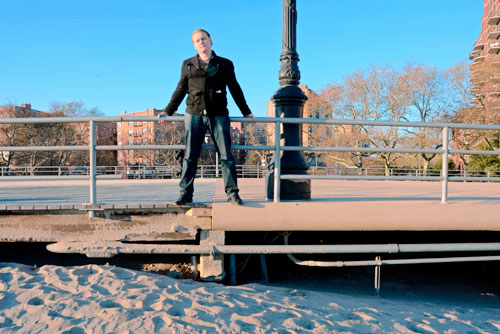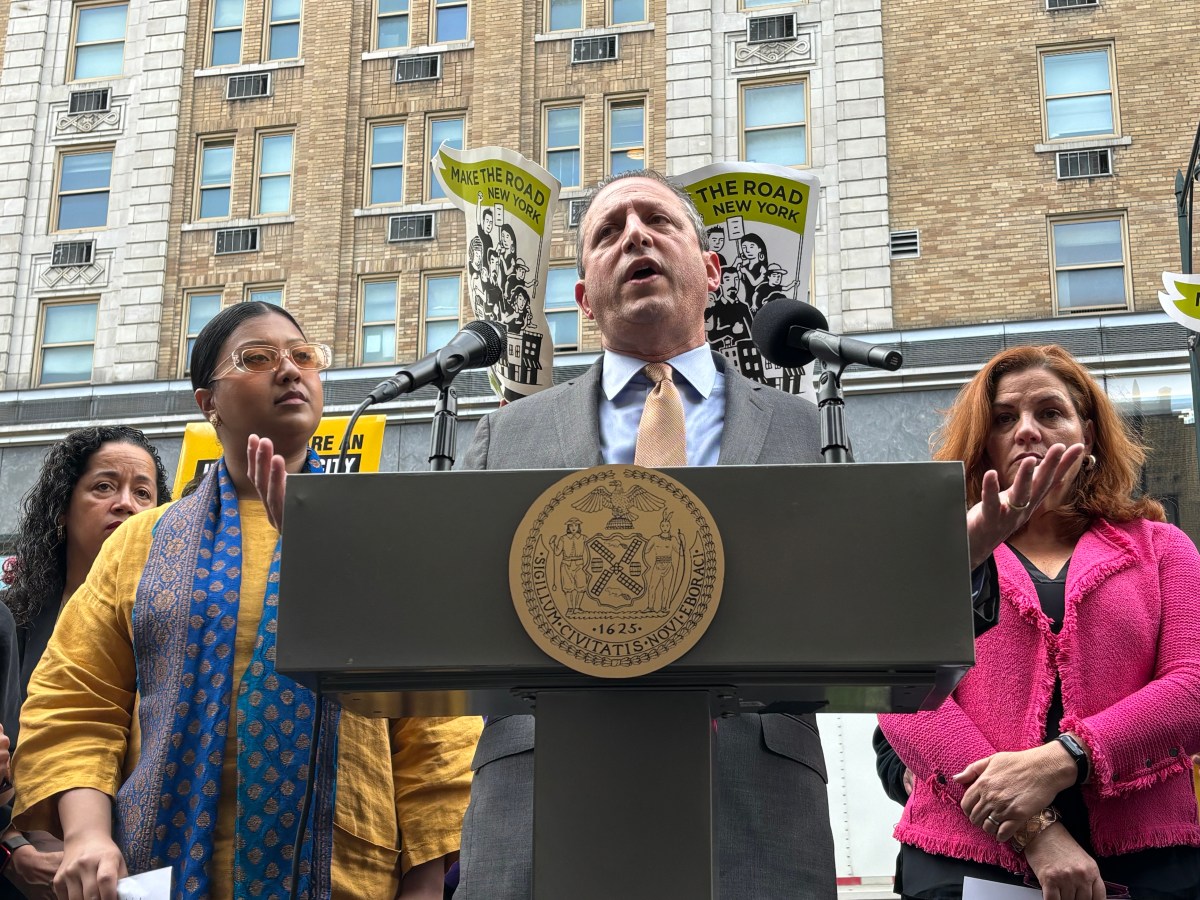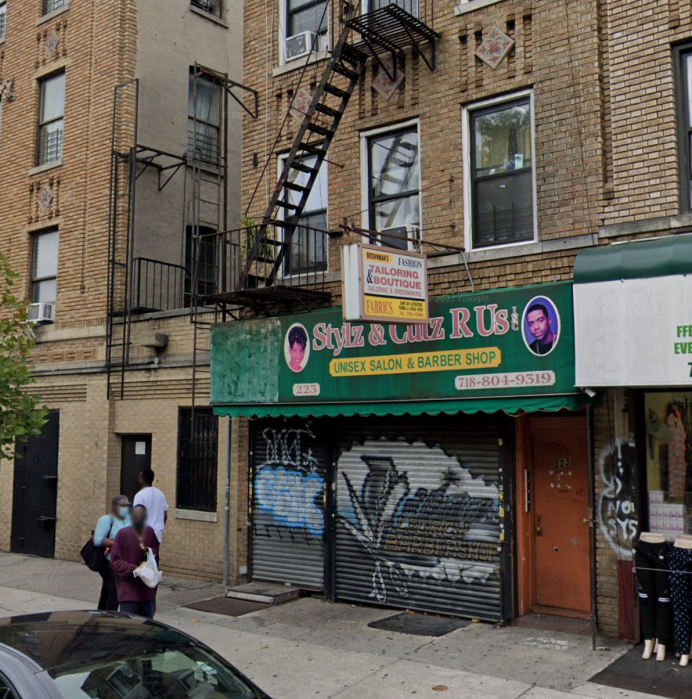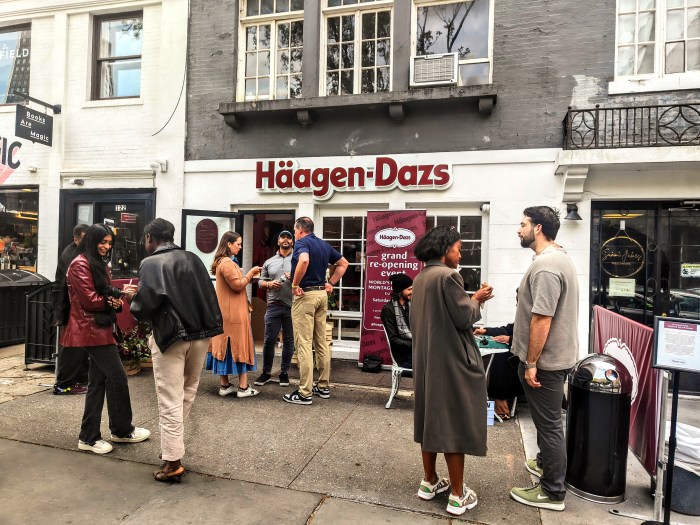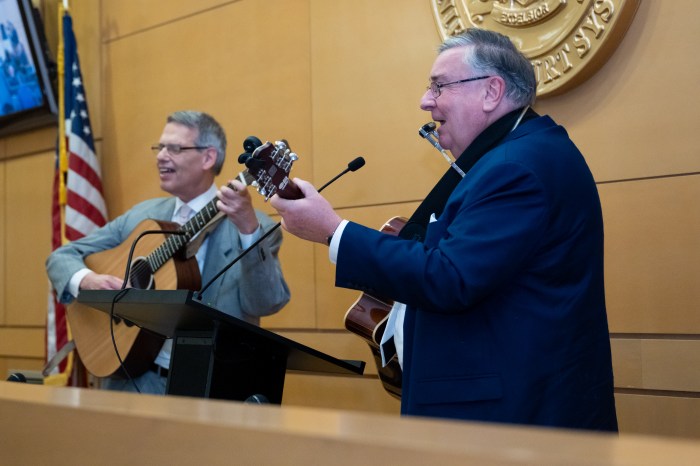For all the destruction it caused, Sandy mostly spared Coney Island’s iconic wooden Boardwalk — and one group of activists is hoping that the storm might even have saved it.
Coney Island and Brighton Beach residents claim that the wooden stretches of the promenade weathered the superstorm better than the sections converted to concrete and plastic imitation decking — and they’re hoping to use it as proof to halt the city’s plan to replace more planks with plastic.
The Parks Department plans to turn all but the five blocks of the walkway between W. 10th and W. 15th streets into a strip of plastic composite and concrete, but locals argue that the superstorm demonstrated the superiority of timber.
The plank proponents pointed out that the beach below a stretch of new concrete near the end of Ocean Parkway suffered far worse erosion than the sand underneath older boards nearby.
They claimed that the huge dunes that formed on the parkway were the result of water and sand splashing over the new surface — instead of draining through the planks.
“The wood sections fared rather well, because of appropriate drainage — because you have drainage with boards,” argued Robb Burstein, founder of the Coney-Brighton Boardwalk Alliance.
Burstein’s group filed a losing lawsuit last year to stop the city from going forward with the concrete conversion without an environmental impact study.
The city argued that no such study was necessary — and Supreme Court Judge Martin Solomon agreed.
“Without expert testimony, petitioners cannot establish a substantial adverse change in existing air quality, ground, or surface water quality, or a substantial increase in potential for erosion, flooding, leaching or drainage problems,” Solomon said in his ruling against requiring an environmental study.
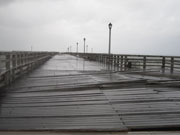
But now the alliance is appealing — and Sandy’s damage will be Exhibit A.
“More than ever, an EIS is needed, as a result of having a storm like Sandy,” said Burstein. “Given that it happened, it’s important that we know what the effects of the new materials will be.”
In March Community Board 13 voted to back Burstein’s appeal.
Some of Burstein’s allies even argued that going forward with the concrete conversion would endanger the population that the wooden Boardwalk presently protects.
“There are people who live here who have to be kept safe,” said Brighton activist Ida Sanoff. “Sandy proved the Boardwalk is part of our infrastructure, and must be maintained.”
But the Parks Department said the storm only re-affirmed its faith in pavement — though it did not give explicit reasons why.
“In general the concrete sections of Boardwalk fared much better in the storm,” said city spokeswoman Meghan Lalor.
Most of the post-Sandy work on the Boardwalk consisted of removing sand and resetting planks popped up from underneath.
But the storm surge tore up huge sections of wooden boards on Steeplechase Pier — leading the city to close the dock for nearly a year until Oct. 2, and replace the damaged sections with plastic lumber.



